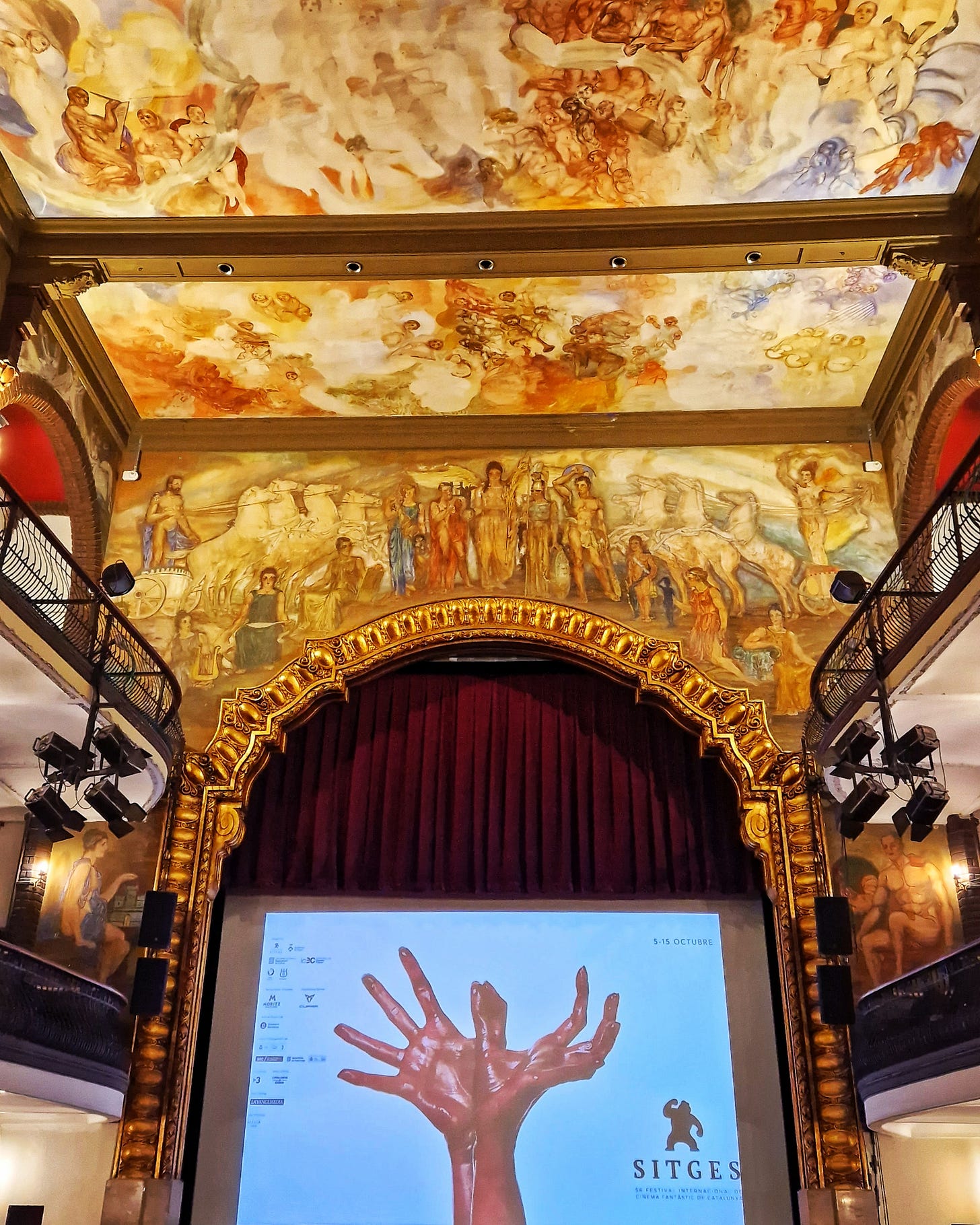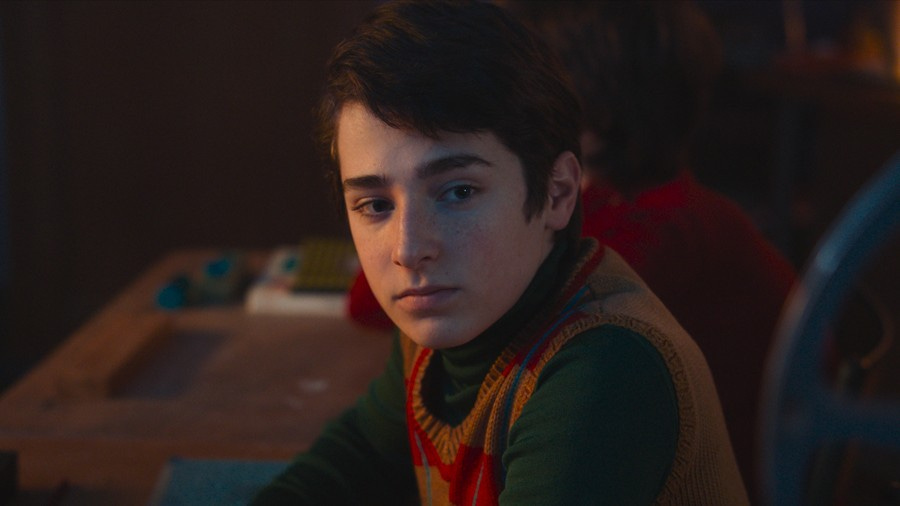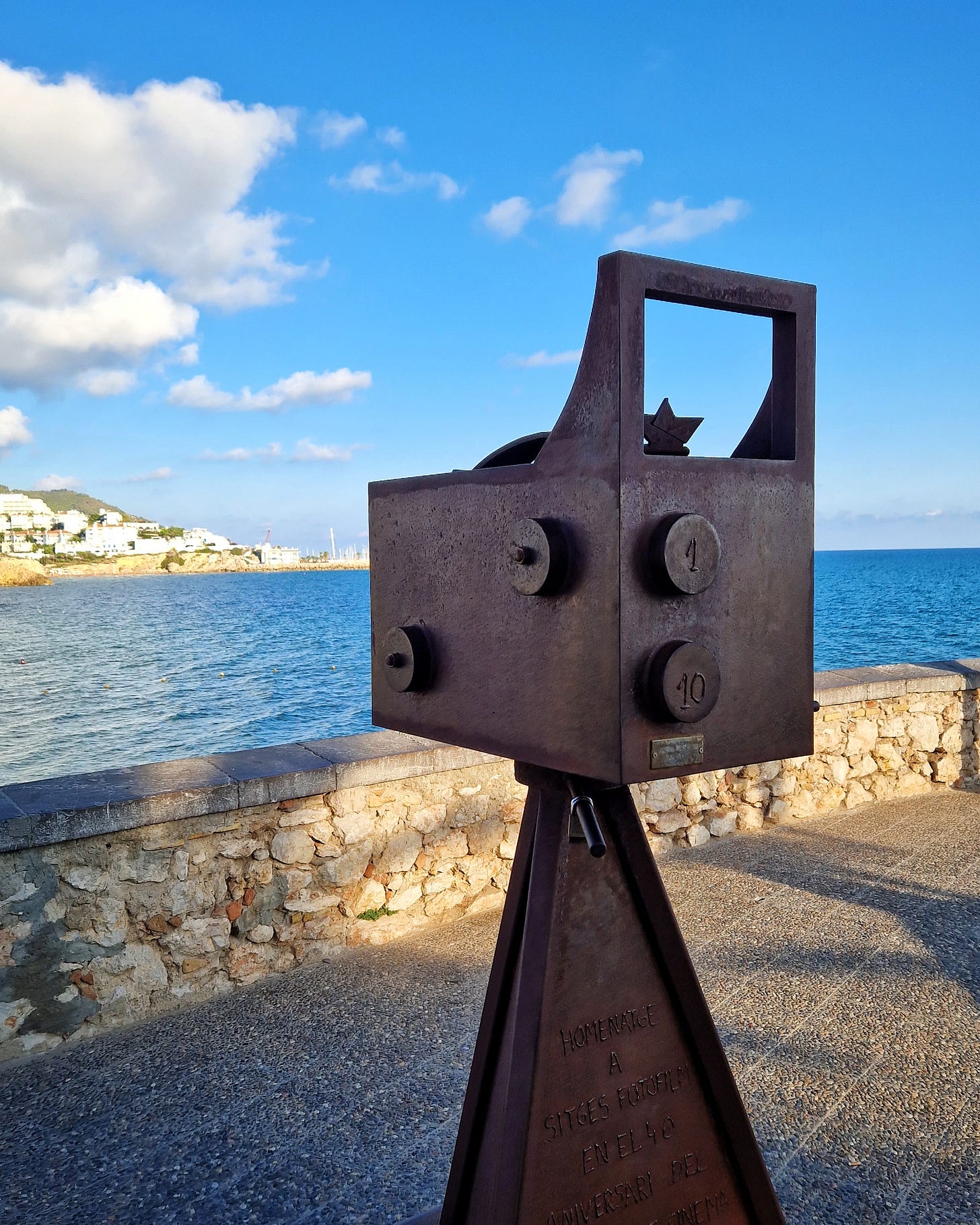Dear generous reader,
I’m back from the heat and frenetic film-watching at the Sitges Film Festival (Festival Internacional de Cinema Fantàstic de Catalunya) in Spain, where I served as a juror for the Méliès d'argent award, along with fellow jurors Matthew Turner (journalist, author and podcaster) and Alexandra West (film critic, author and podcaster).
What is the award? It is the brainchild of the Méliès International Festival Federation:
‘…a tightly knit network of 27 film festivals from 20 countries, with a global attendance of over 800 000 visitors, making it a vital economic and cultural player on the fantastic film scene. Its mission is to promote European fantastic film productions throughout Europe and the world, by enhancing their visibility and their standing both among the public and within the industry, and encouraging their circulation. The Federation works to fulfill this mission through its festival network in Europe, its supporting members in Asia, North America and South America, as well as its Méliès awards for outstanding European genre films.’
The federation is named after Georges Méliès, a French pioneer of fantastic films and special effects during the silent film era. It organises the competition in which eight European film festivals present a Méliès d’argent to the best European feature film and the best European short film, and another eleven festivals award a Méliès d’argent for the best short film only. Individual films cannot get multiple awards from festivals, which ensures a variety of Méliès d’argent winners, and a strong representation of the range of movies being released in Europe in any one year.
At the end of each year, a special jury is convened to examine all the Méliès d’argent winners and they choose a Méliès d’or for the best European fantastic feature film and short film of the year, which are announced at Sitges. As it happens I was on the Méliès d’argent jury at the Trieste Science+Fiction Festival in Italy last year, so I was keen to see who won the coveted d’or for 2022… and to my delight it was awarded to Irish film, LOLA, co-written by Andrew Legge and Angeli Macfarlane, and directed by Legge. Our Trieste jury (myself, Giles Edwards and Loris Curci) gave the Méliès d’argent to LOLA last year, thus qualifying it for the d’or. It’s the first time an Irish film has won the Méliès d’or.
I’m so pleased that among all the contenders across Europe, this low-budget black and white time-twisting film was considered the best speculative feature film in Europe in 2022.
The winner of the Méliès d’or for best short film was ‘Gnomes‘ directed by Ruwan Suresh Heggelman and co-written by Heggelman, Jasper ten Hoor and Richard Raaphorst, and is ‘a blend of brutal and adorable horror, starring a gnome with murderous intentions.’
Also awarded was the ‘…Career Méliès, which acknowledges the lifetime achievement of an outstanding industry name, [and] went to Jorge Guerricaechevarría, Spanish screenwriter who has collaborated on important films including Mutant Action, The Day of the Beast, Cell 211 (which earned him the Goya Award for Best Adapted Screenplay) or more recently The Laws of the Border (which earned him his second Goya). In short, it’s impossible to understand Spanish genre filmmaking over the last 35 years without the presence of Guerricaechevarría.’
Our workload at Sitges was heavier than I experienced at Trieste. Over nine days we had to watch 22 feature films and nine short films, and I also watched a number of other films that were ‘out of competition’, i.e. I was under no obligation to watch them other than I had a gap in my schedule and I was interested in the film — thus the two recommendations in last week’s Substack post (I’ve watched more since).
There are a lot of film awards handed out at Sitges, so there were multiple juries adjudicating upon various categories. Over the festival we bumped into each other at meals or at screenings and it was heartening to meet such a smart and good-natured group of people, all dedicated to cinema and to the promotion of speculative films.
As I mentioned last week, there are numerous other events happening at Sitges, including interviews, conversations, exhibitions, and an entire family fun programme. It’s an incredible event in a special seaside location, so you can enjoy its coastal charm in between the dark screenings. I was thrilled to see films in both the Cinema El Retiro Sitges and Cinema Prado, the latter being one of those special European cinemas with frescos all over the walls.
Our Méliès d’argent jury had several discussions about our selection of films as we progressed through the week. I didn’t watch trailers or read the logline of the films before I watched them, as I wanted to view each one with an open and curious mind.
In the end we came to a strong agreement for our winning choice for the Méliès d’argent feature film at Sitges 2023: La Morsure (Bitten) written and directed by Romain de Saint-Blanquat; this is his feature film debut.
It is set in 1968 and has an electric vibe of young people breaking away from old traditions in order to have a fun night out in a spooky mansion in the countryside. Our protagonist is Françoise (Léonie Dahan-Lamort) a proto-Goth with a premonition she is going to die, thus determined to escape her convent boarding school with her best friend Delphine (Lilith Grasmug) for a night of dancing and bad choices. Their intense friendship, see-sawing between fights and make-ups, is at the core of the film, with terrific performances by each actress. Dahan-Lamort puts in a phenomenal performance as the fierce young woman who pursues her liberation at all costs. No doubt we will see much more from her in the future.
It is a beautiful, vibrant, dreamy film that conjures up a moment in one’s life, that despite the supernatural element, feels like a familiar rite of passage that most people experience when desperate to establish their adult identity.
Our selection for the Méliès d’argent short film at Sitges 2023 was Cultes, written and directed by David Padilla, and once again it is a period French film, that tells a compelling story in its 16 minutes. Calliste Dupin plays the boy at the centre of the film, who is inadvertently shown a trailer for a movie that no Catholic child would be allowed to see in 1970. This is also a debut film for Padilla.
I was honoured to present this award to Padilla on the stage at the closing ceremony, and met him briefly afterwards during the night’s celebrations. He was almost floating on air and extremely happy with the result. I hope he has a long future in front of him in cinema.
There must be something in the French water at the moment, because many of the memorable films in our category were French or French co-productions, such as the French/Belgian action animal-morphing thriller Le Règne animal (The Animal Kingdom), directed by Thomas Cailley, and co-written by Cailley and Pauline Munier. It deserves a wide and popular release across the world. It has strong performances, gorgeous score and excellent special effects depicting how people randomly begin to transform into animals (known as creatures/critters in the film). This examination of family and friendships during the gradual loss of personhood, along with a stark confrontation with our relationship with animals, is played out in a thoughtful and beautiful way.
Also worth watching is Vincent doit mourir (Vincent Must Die) which has a terrific premise and memorable perfomances, although it is a touch too long and doesn’t quite carry through on its original idea. Another marvellous period piece is The Vourdalak, an adaptation of Aleksey Konstantinovich Tolstoy's 1839 gothic novella, The Family of the Vourdalak. Using a simple setting, a small but excellent cast, and terrific costumes, the film depicts a family paralysed by a war that is echoed by the danger that come from within their family. This is a feature film debut by Adrien Beau which indicates a promising career. He made a particularly brave choice in the film regarding the central monster, which I loved, but it will no doubt divide people.
I must mention the utterly bonkers She Is Conan, a Conan/Red Sonja parody written and directed by Bertrand Mandico, which deserves praise for its outrageous twist on the premise and its cinematic audacity. It’s so refreshing to watch a movie that goes full-tilt into bizarre scenarios with such panache. All the actors appear to be having tremendous fun in their sequences, which I don’t think totally hang together, but the last section of the film is an amusing metaphor for art and how its hunger for funding can warp its vision. I watched this at a late night viewing and it maintained my attention after a long day watching movies.
Restore Point, a cyberpunk detective story directed by Robert Hloz, and co-written by Tomislav Cecka, Hloz, and Zdenek Jecelin, is a solid film for those who love a techno-thriller. It’s got inventive use of technology along with a twisty investigation where the police officer attempting to solve a murder realises that there are many organisations attempting to thwart her search for the truth.
I also enjoyed watching All You Need is Death, the first feature film by Irish documentary maker Paul Duane, which creates a unique premise about two music collectors in Ireland pursuing rare variations of ancient ballads. Their hunt, which brings them to the formidable singer Rita Concannon (a stand-out performance by Olwen Fouéré), unleashes powers the pair cannot contain. I’m looking forward to seeing more movies from Duane.
And congratulations to Irish filmmaker Rioghnach Ní Grioghair who won the Frontières Award in the Sitges FanPitch for her project, ‘The Hive’.
Finally, it was a pleasure to meet the winners of the Sitges FanLab Fantastic Residence 2023: Anna Kasińska (a Polish director and screenwriter), Elisa Puerto Aubel (a Belgian-born director/screenwriter/script doctor) and Gigi Romero (a Spanish-Venezuelan director and screenwriter). We talked for an hour about making films and how to maintain your inspiration and spirit when projects take so long to develop. They were a joy to meet and I expect they will continue to produce amazing work.
Huge thanks to my fellow jurors for their companionship and conversation, and to the amazing staff at Sitges, especially Adrià Guxens (filmmaker, producer and writer) who wrangled all the juries for the festival — a tough job but one he handled with prompt responses and beautiful spirit, and his excellent assistant Maria Gracia. Plus a big shout-out to the wonderful Mònica Garcia Massagué, who is the Sitges General Manager, and to the Artistic Director, Ángel Sala.
Mil gracias.
For those of you in the West of Ireland, why not celebrate our Samhain bank holiday by taking in films, panels or workshops at the Ennis International Fantastic Film Festival? This scrappy festival is only in its second year and is aiming to build upon its initial success with a variety of events.
On Saturday, 28 October at 11:00 I’ll be part of a panel discussion at the TUS Ennis Campus on ‘The influence of Irish Folklore on Horror and Fantasy film’ moderated by Jack Fennell (writer and researcher). I’ll be in conversation with film producer John McDonnell, Gothic author Tracy Fahey, and film director Stephen Hall.
Tickets are €12 for the event, and can be purchased via Eventbrite.








